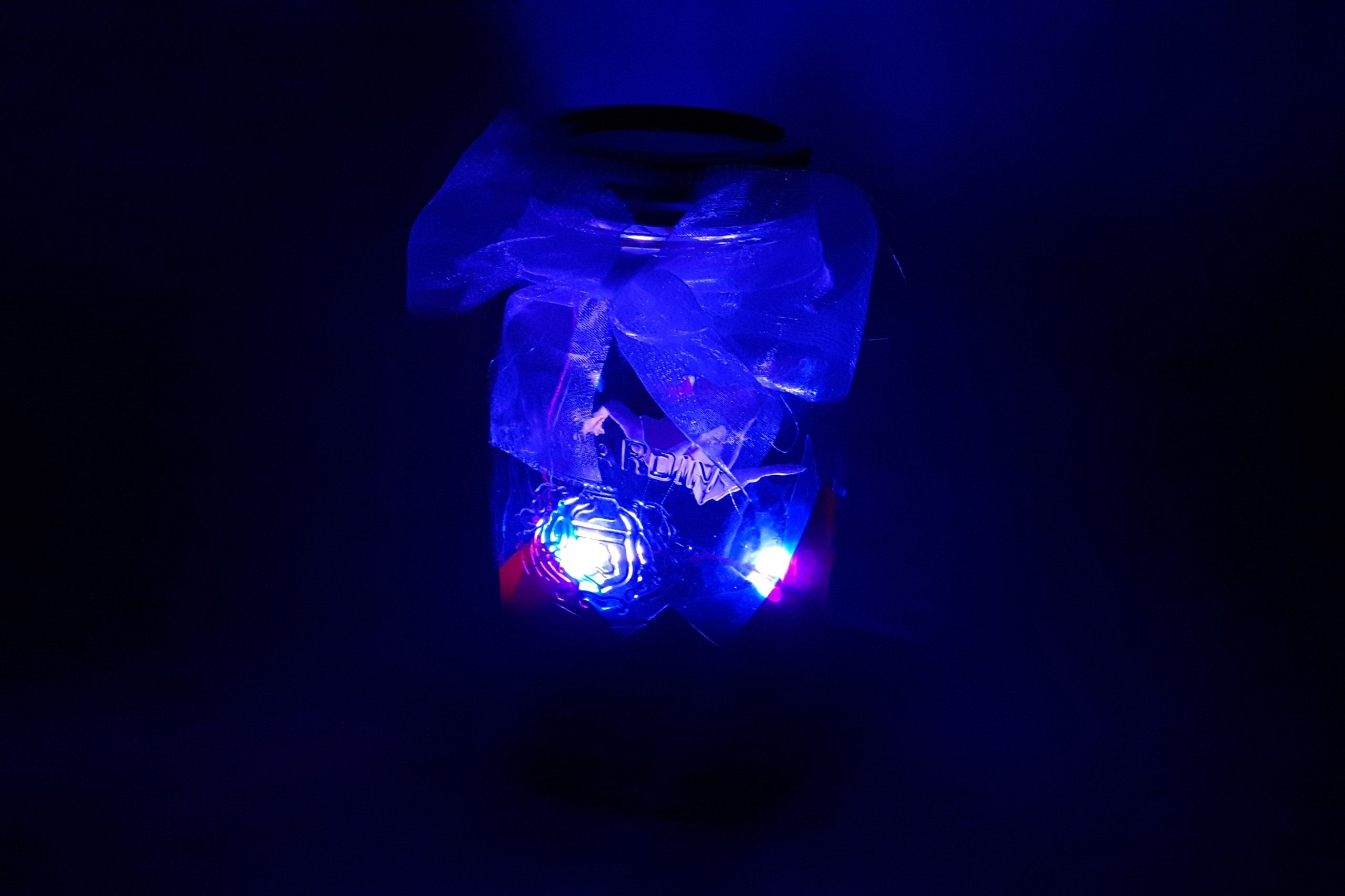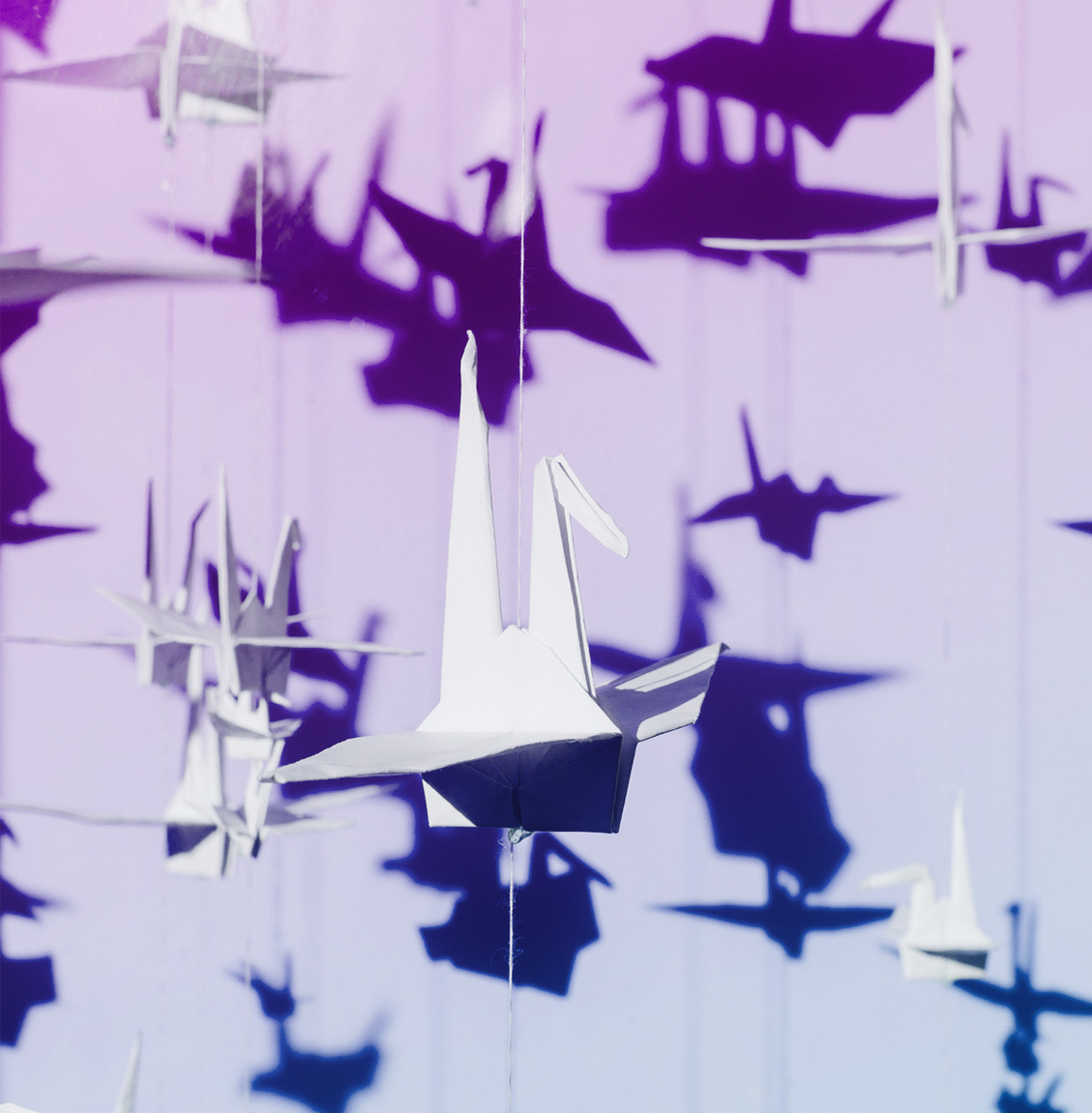
About
My goal was to prototype an interesting lamp that would animate a room with its changing lighting. I wanted to create a final piece that can be moved around on its own. The jar uses a 9-volt battery in the lid so that it can be easily unplugged and changed.
The aesthetic creates a sense of sentimentality and the piece is packaged as something you can interact with and give to a friend. In complete darkness, viewers can also interact with the double-shadow effect created by the two LEDs.
I explored the appearance of a cross-fading and mixing effect between red and blue light. In each RGB LED, the light transitions from red to blue, creating purple and magenta shades in-between. It’s interesting to view the effect through a variety of materials, such as the glass of the jar, the red and blue lighting gels, the polyester bow, and the origami crane. Each component provides a variety of light interaction.
Final Video of the Prototype
Material Explorations
I tested the effect created by shining red and blue LEDs through various materials:
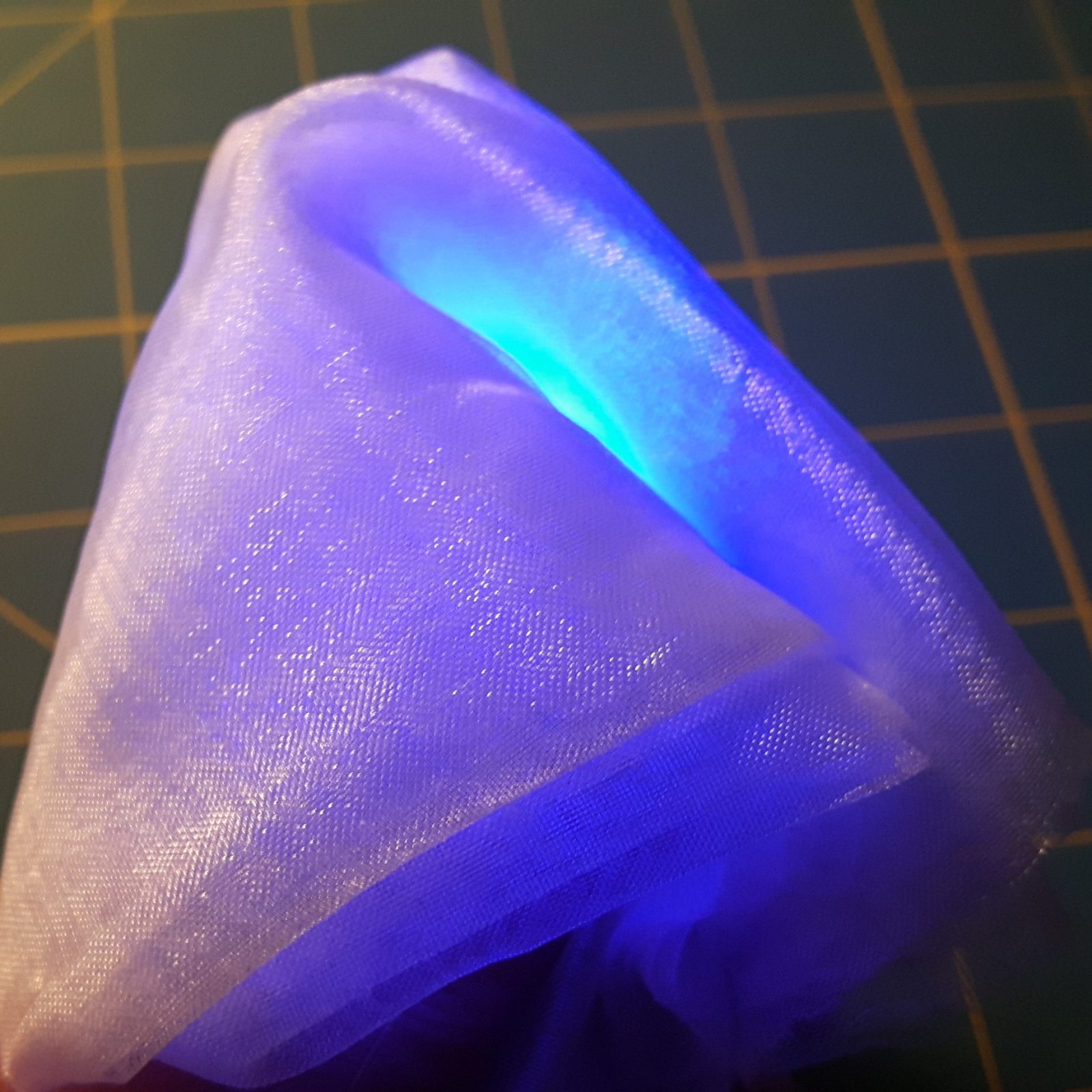
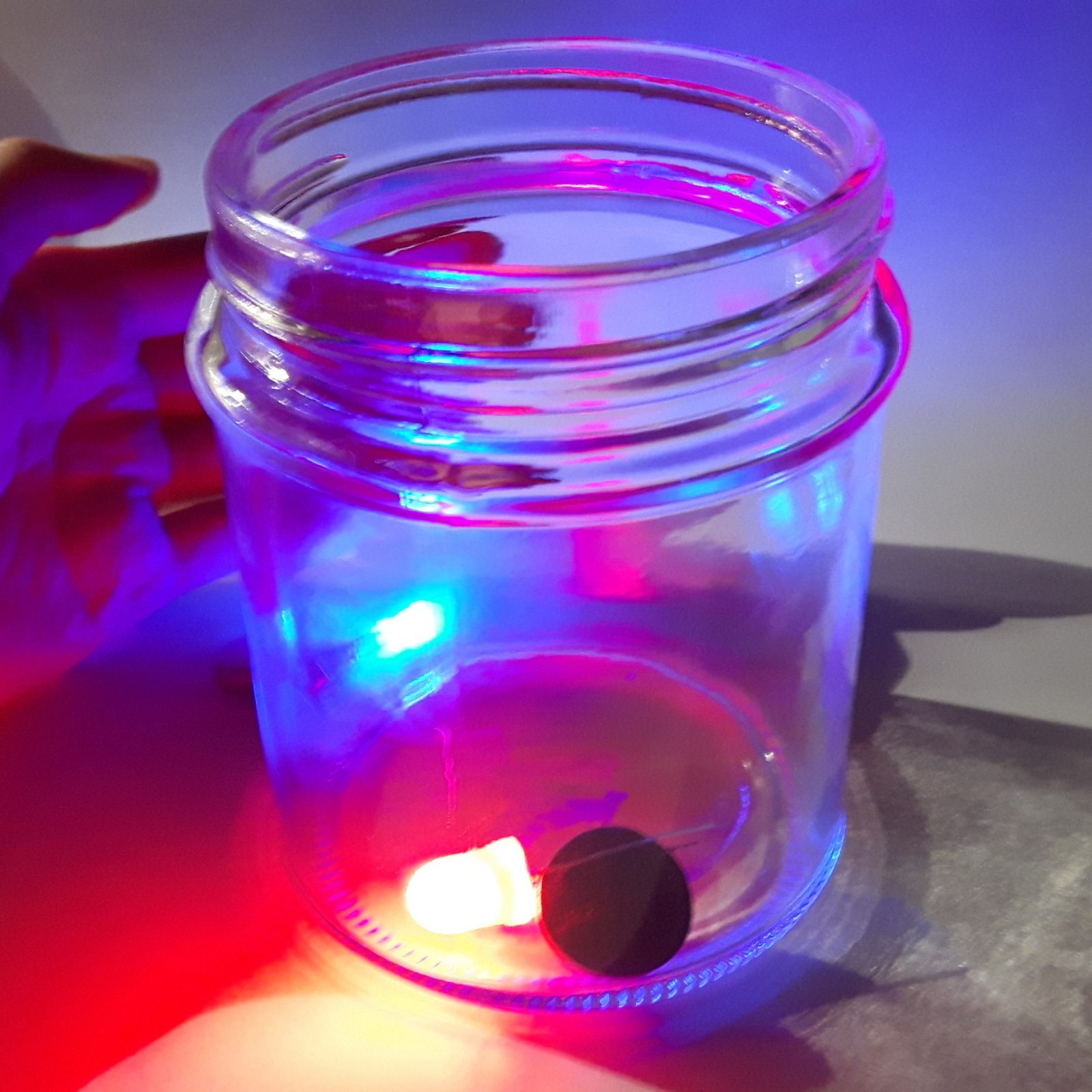
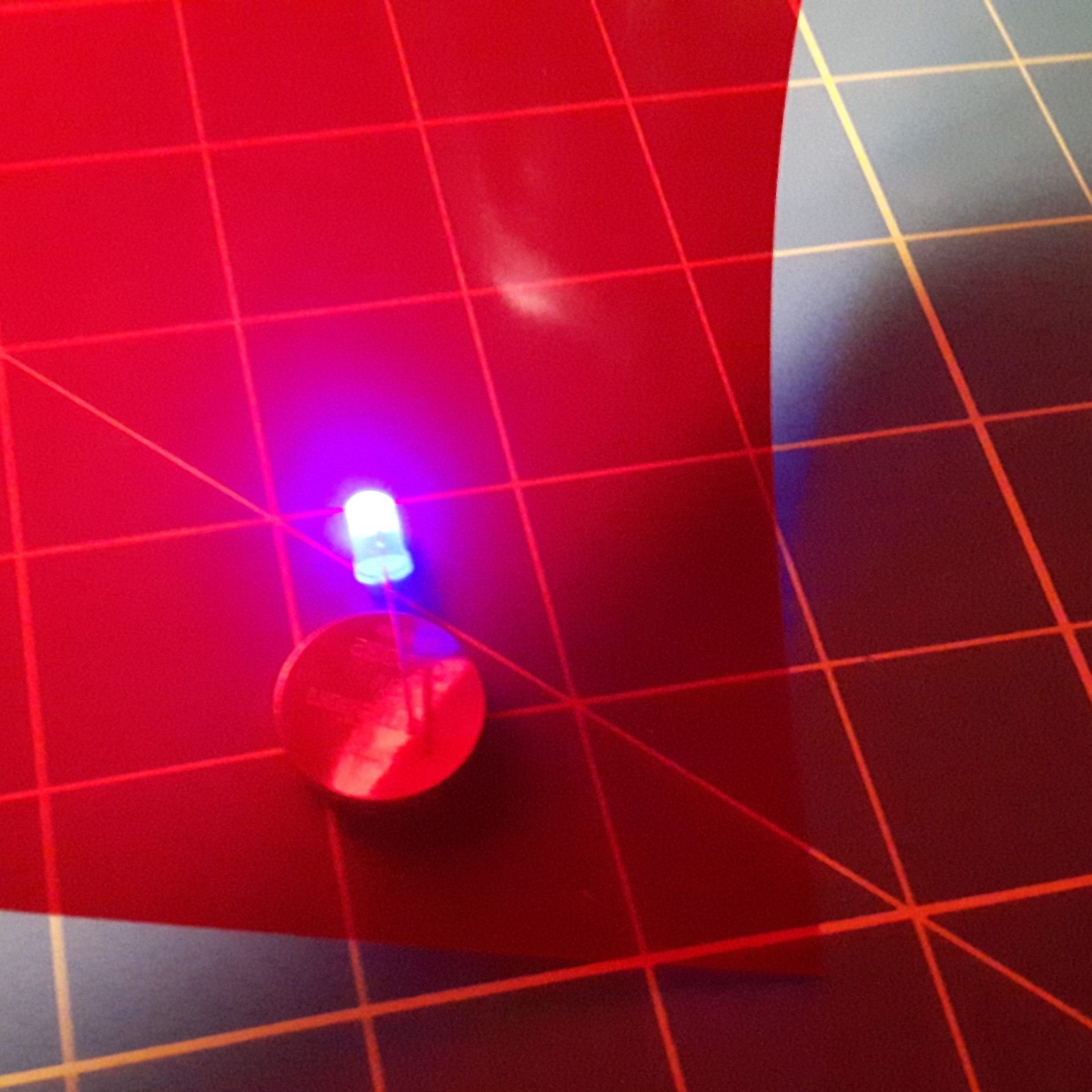
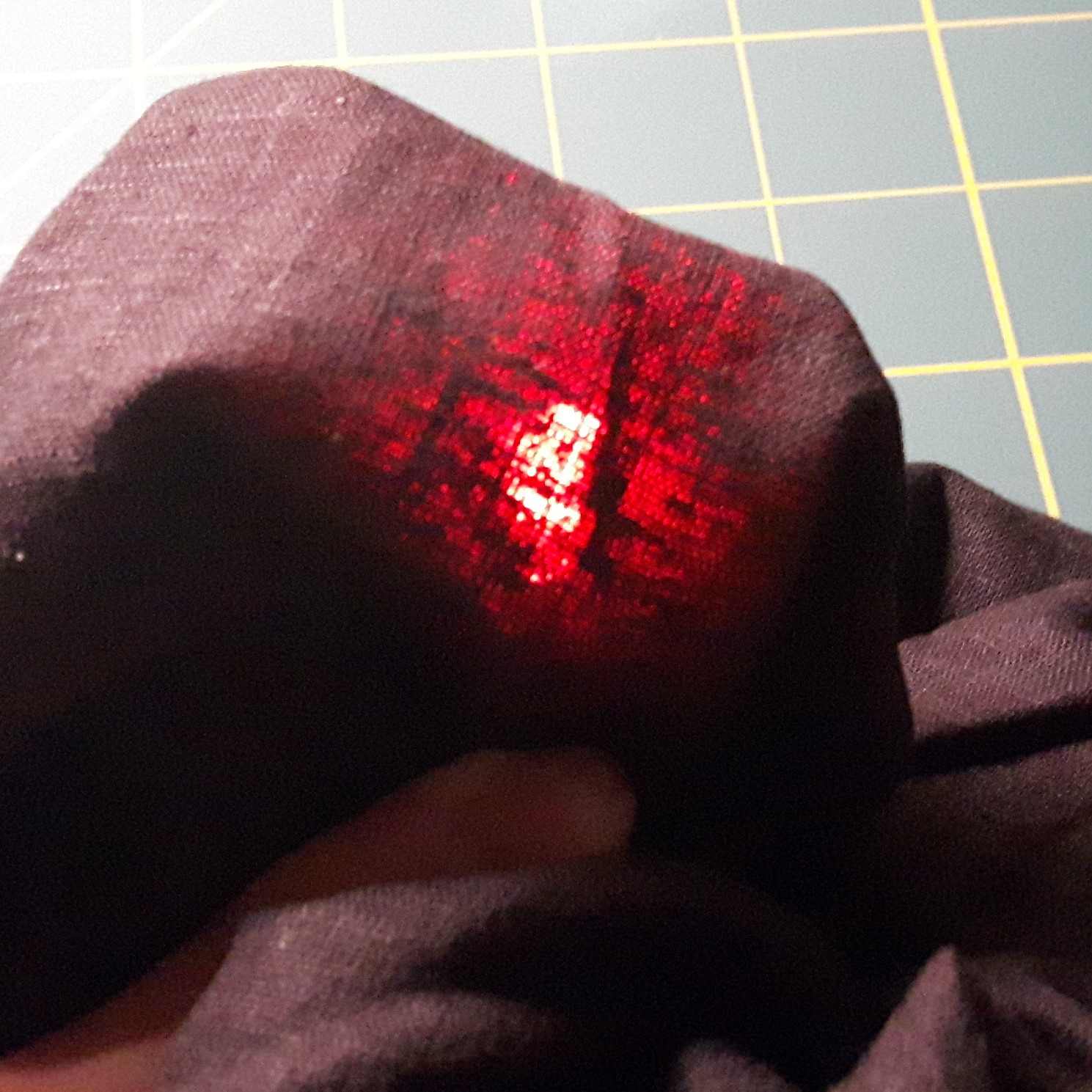
Circuit Diagram
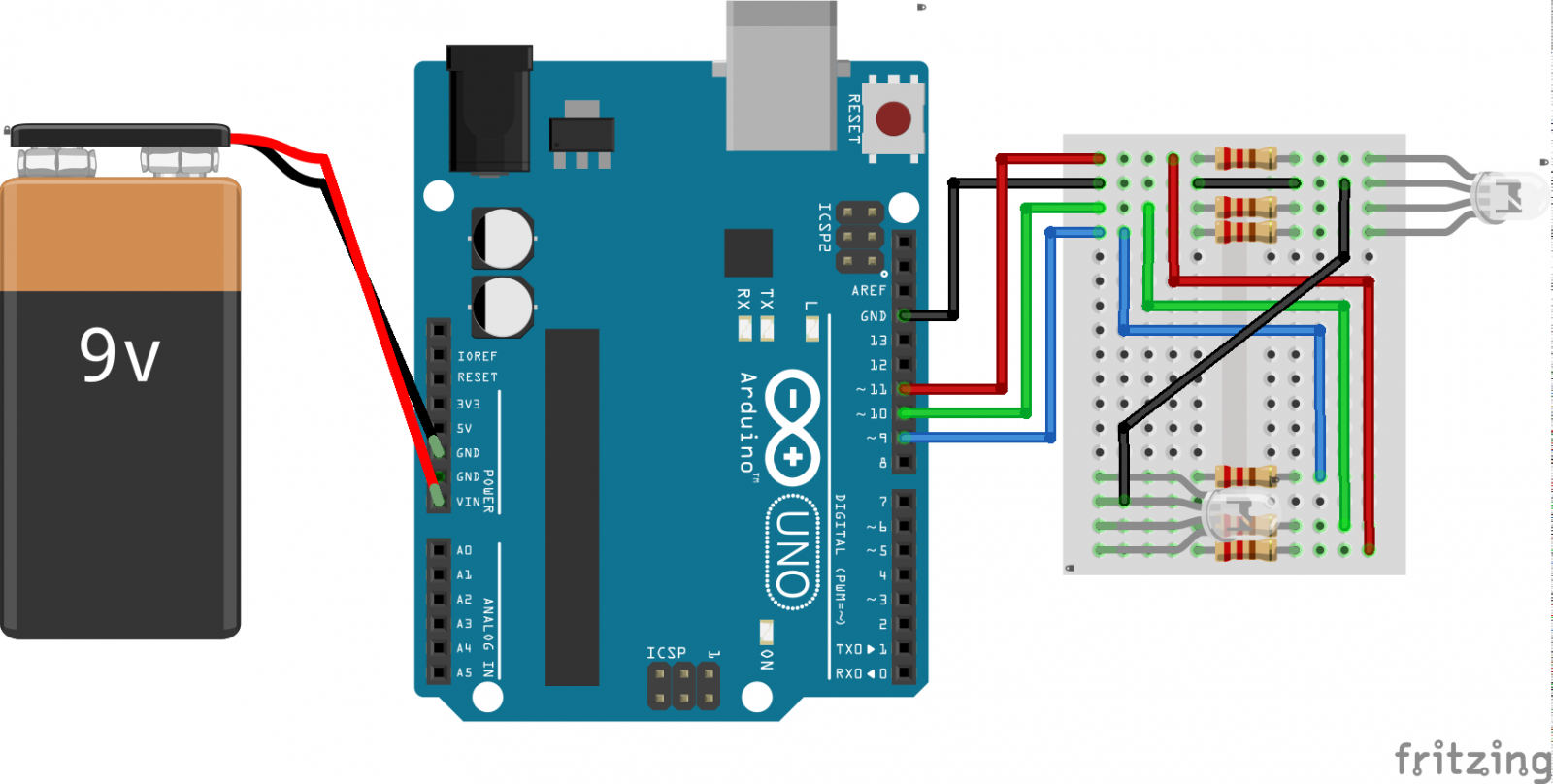
Process Images
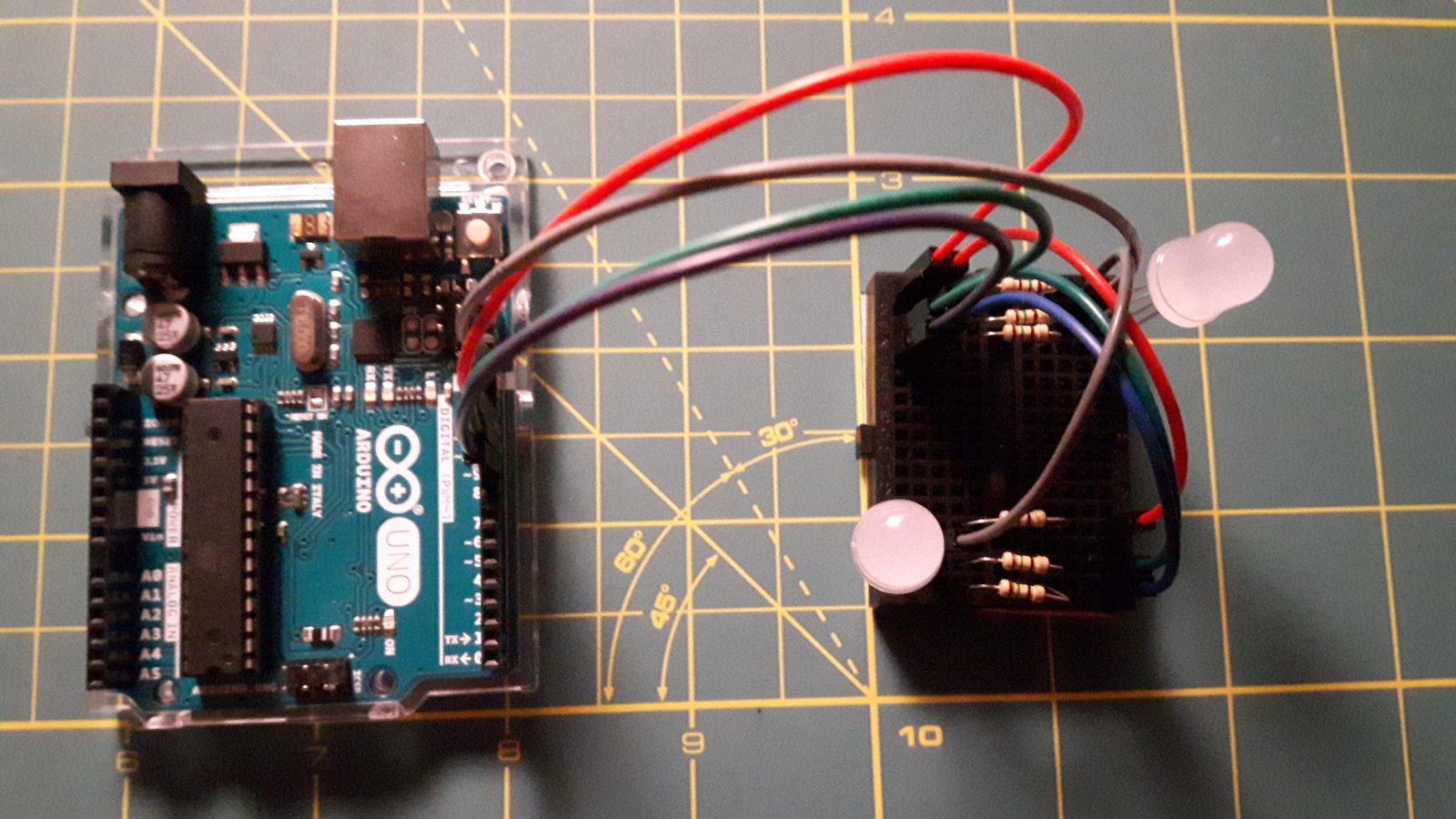
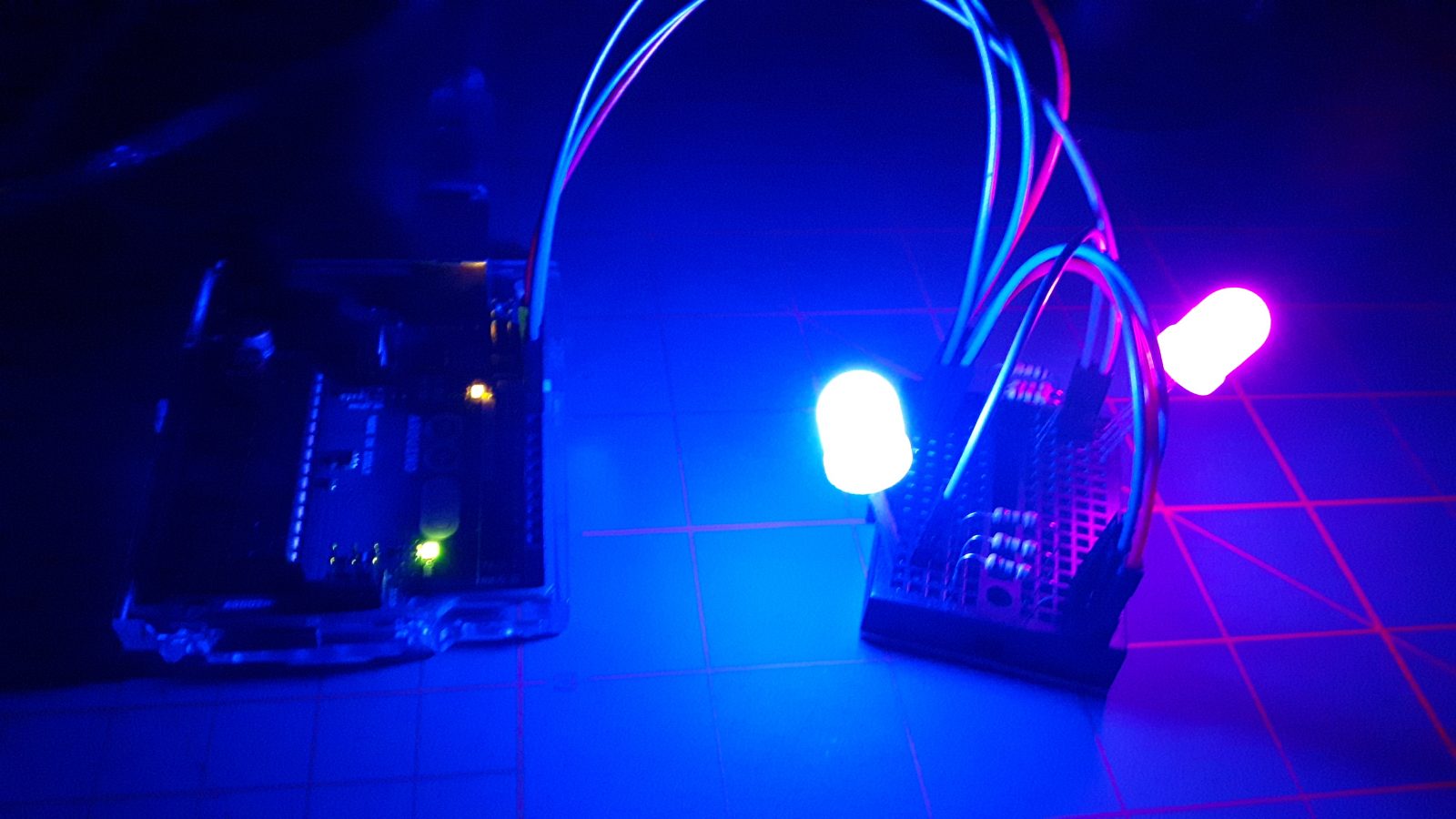
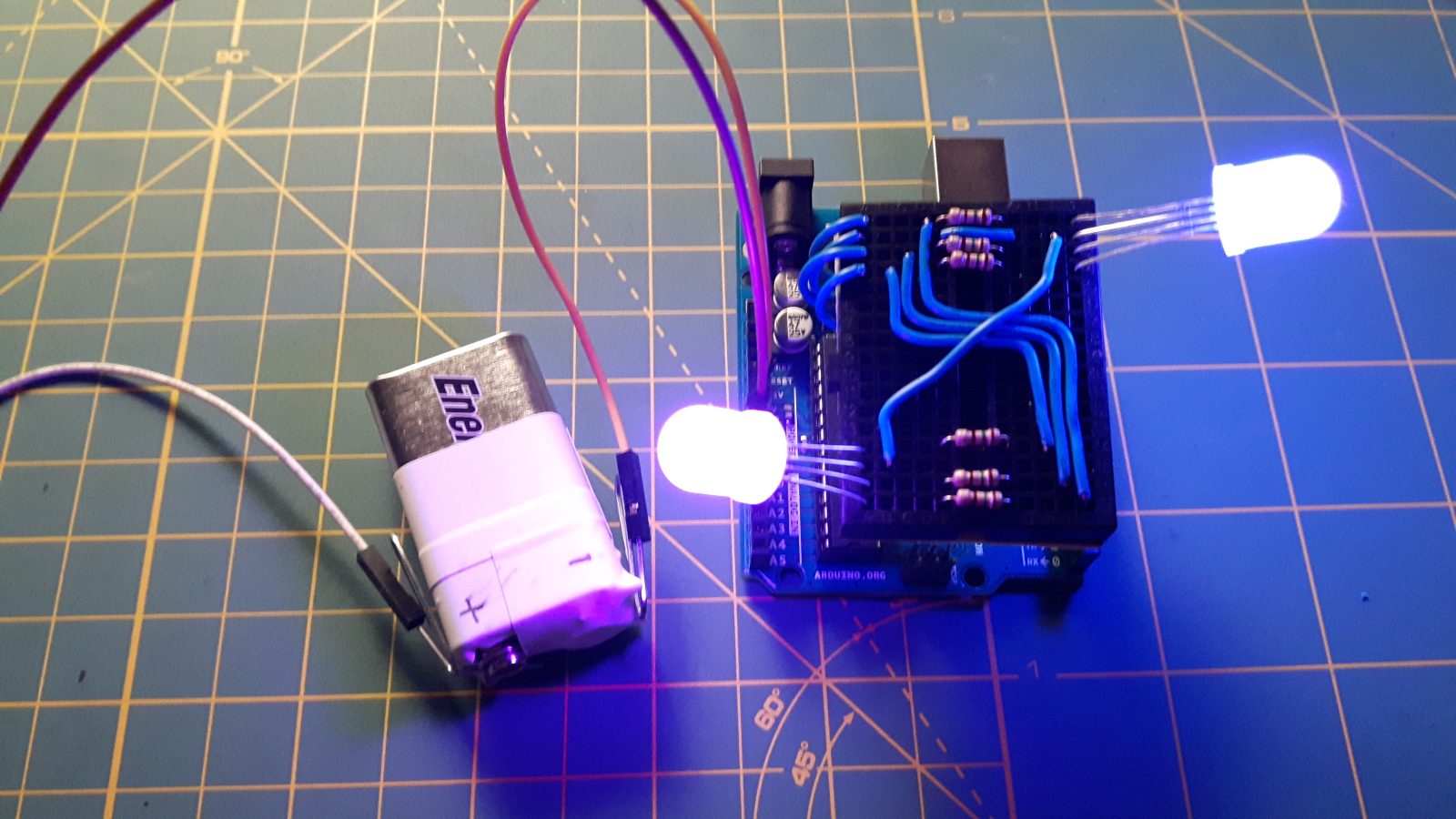
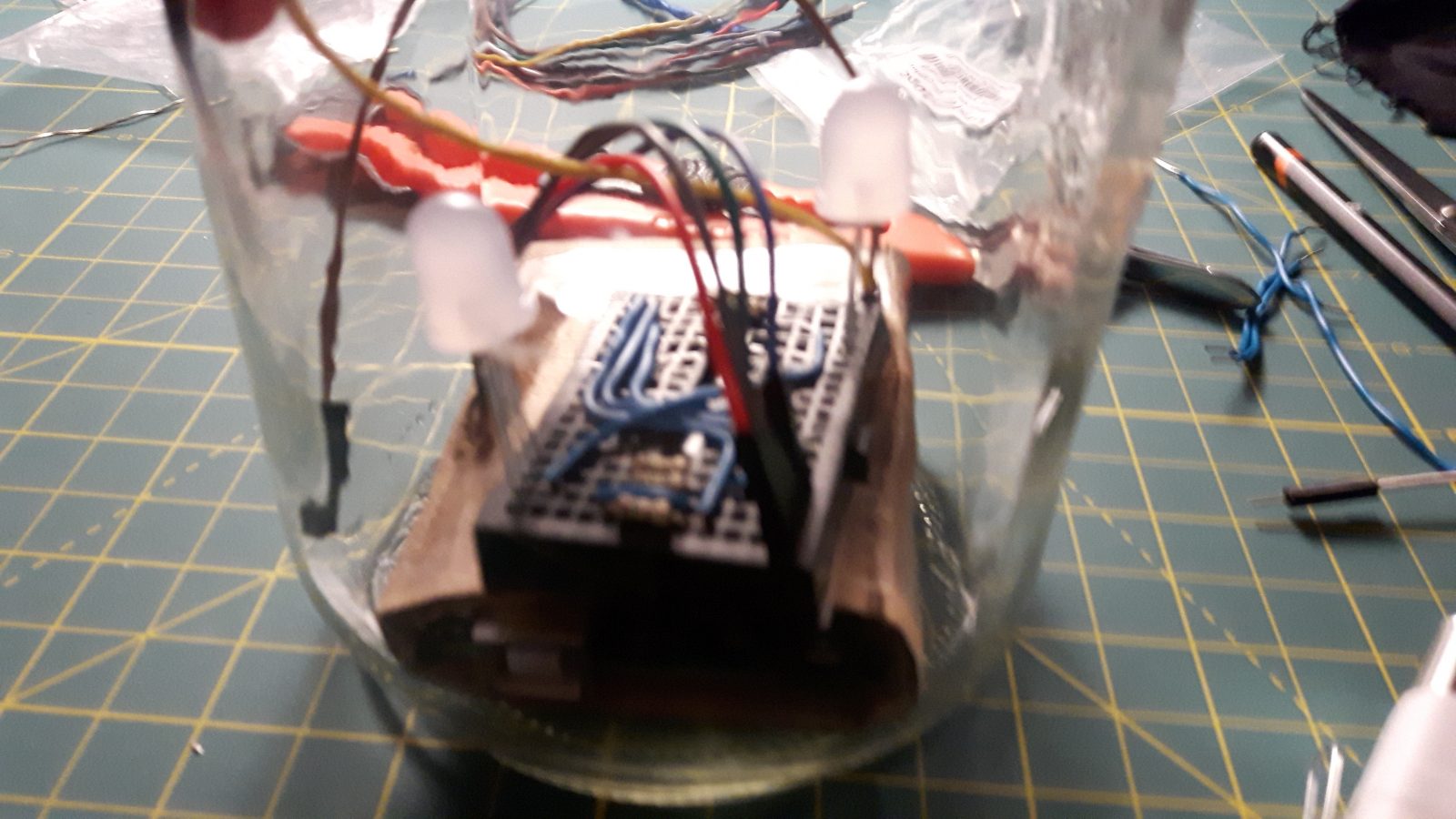
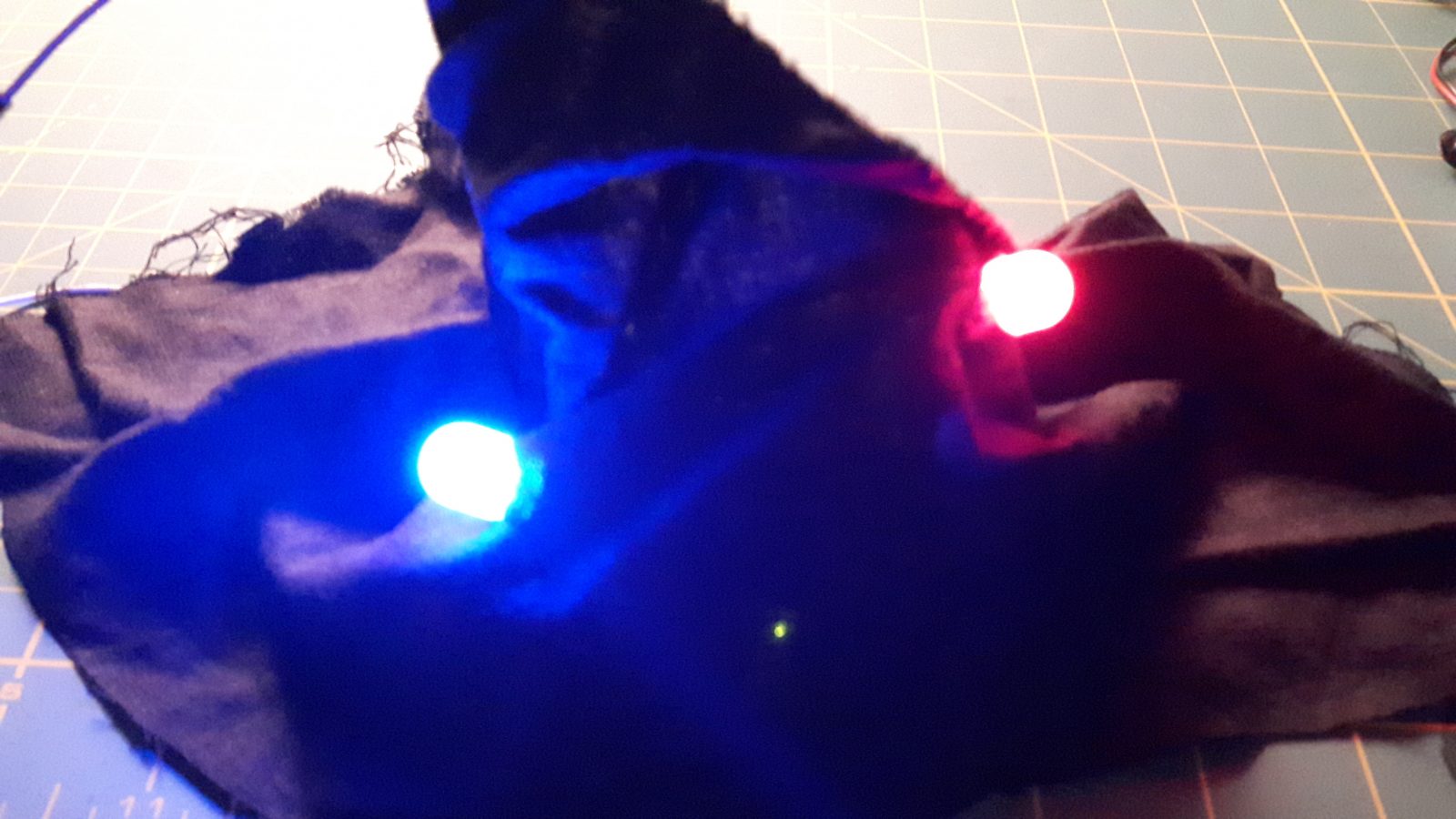
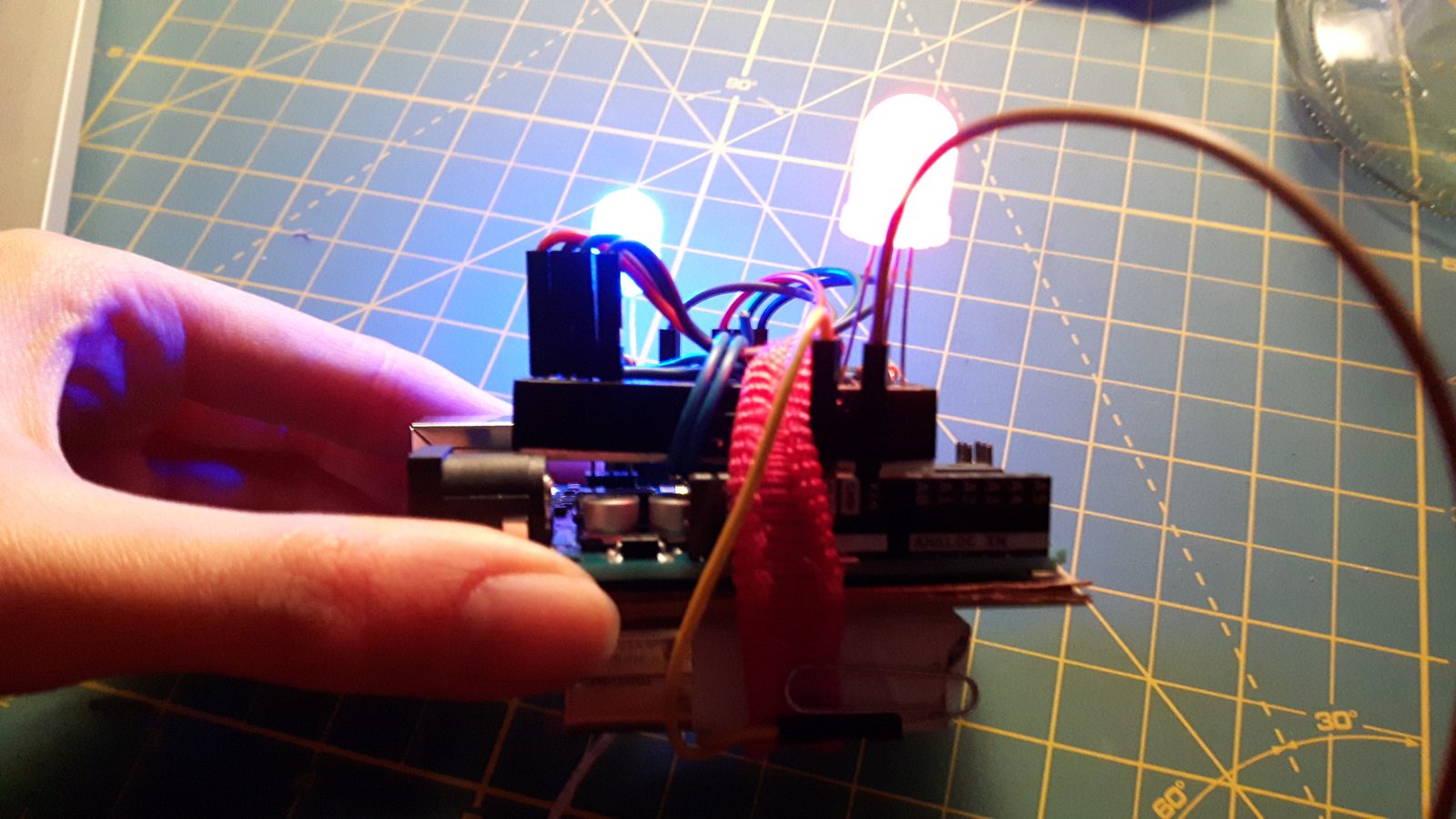
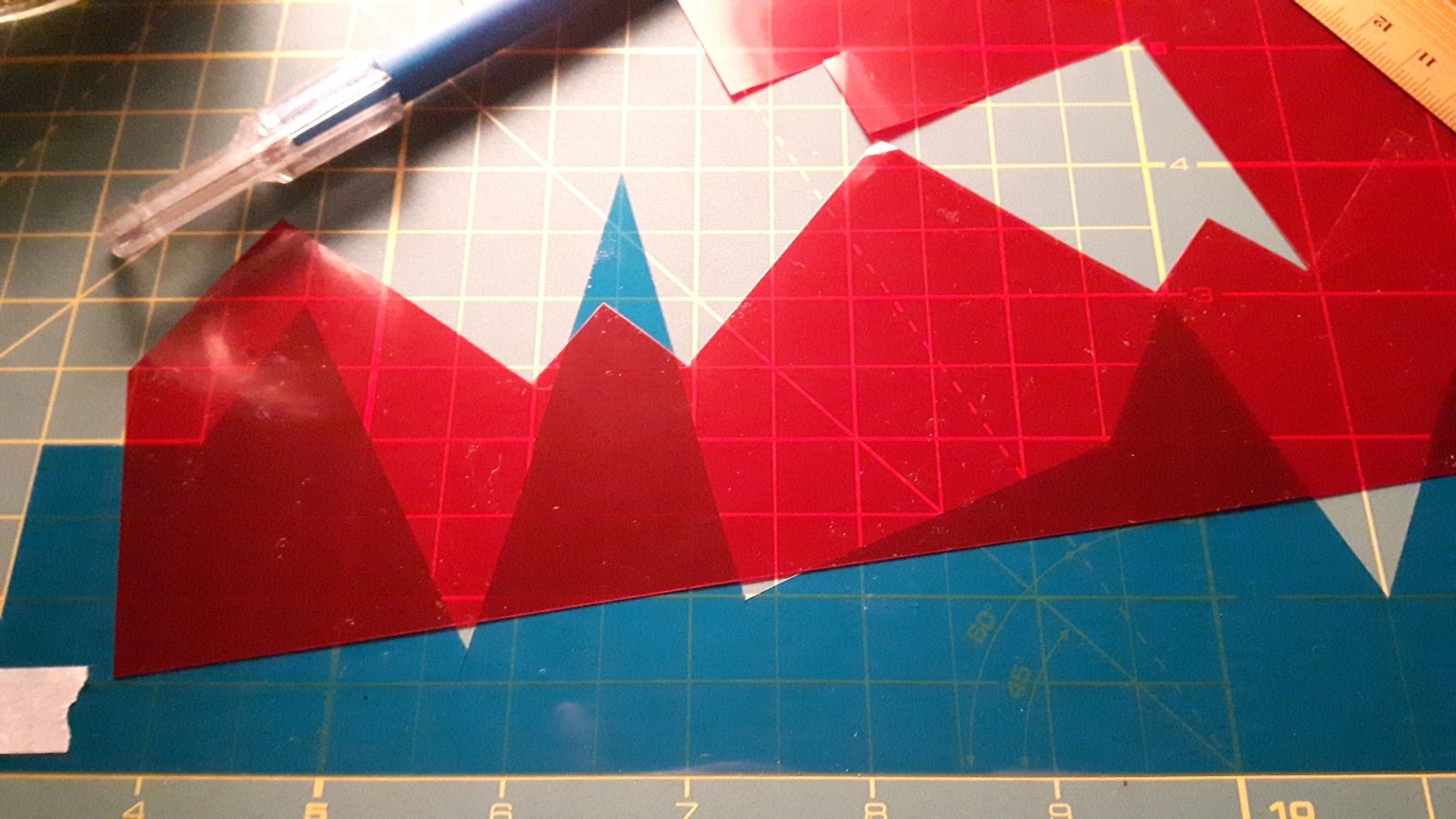
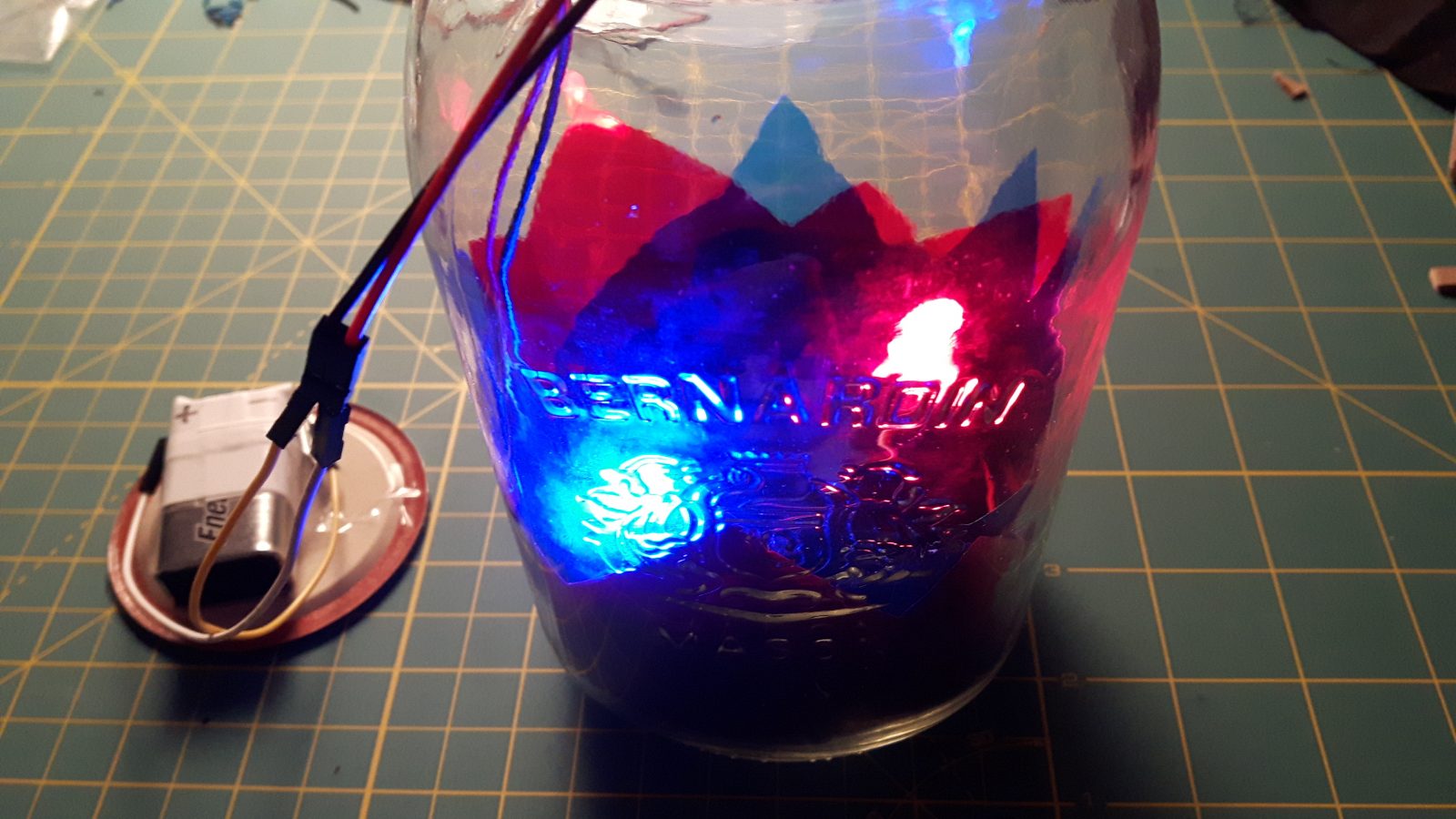
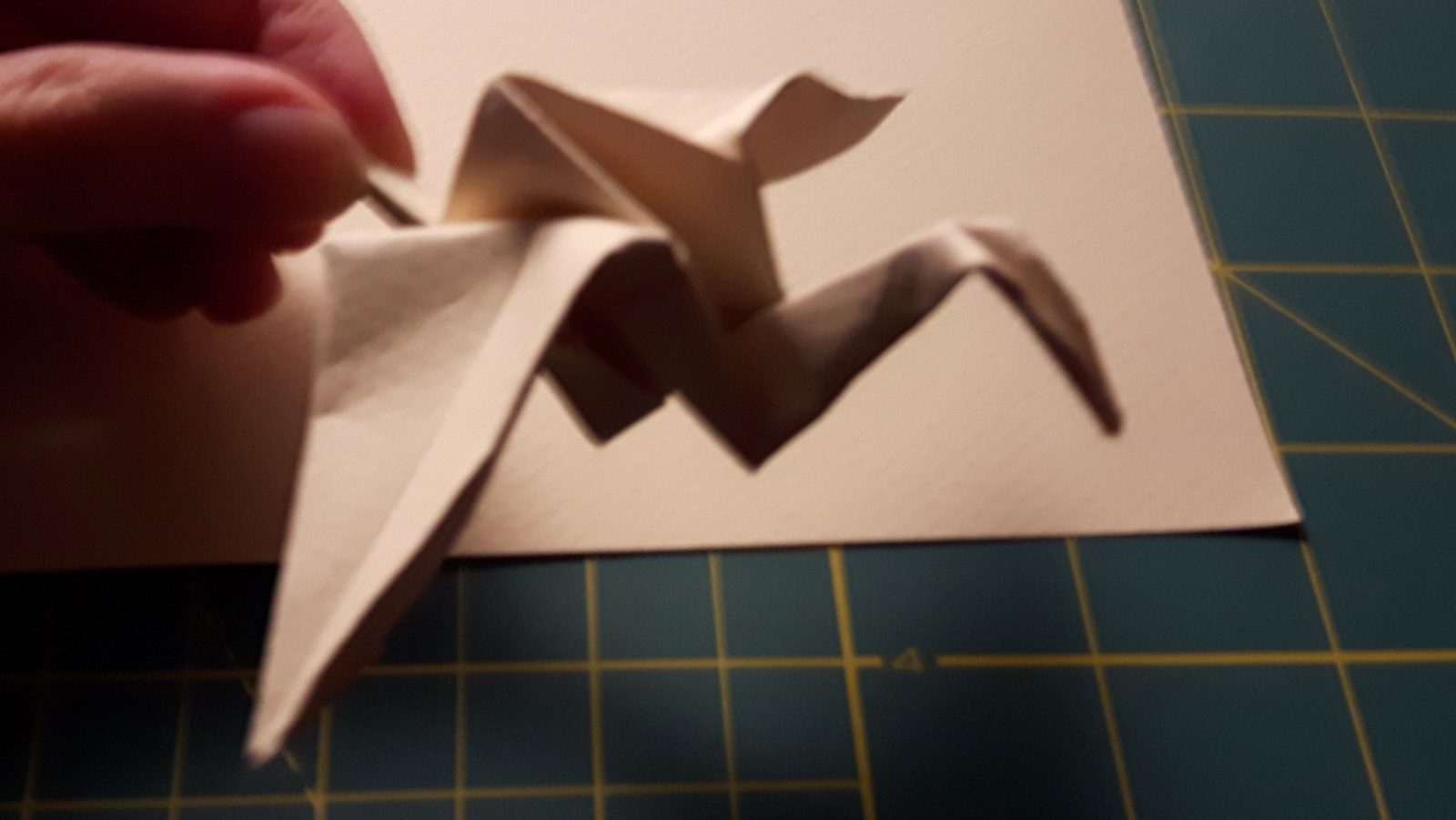
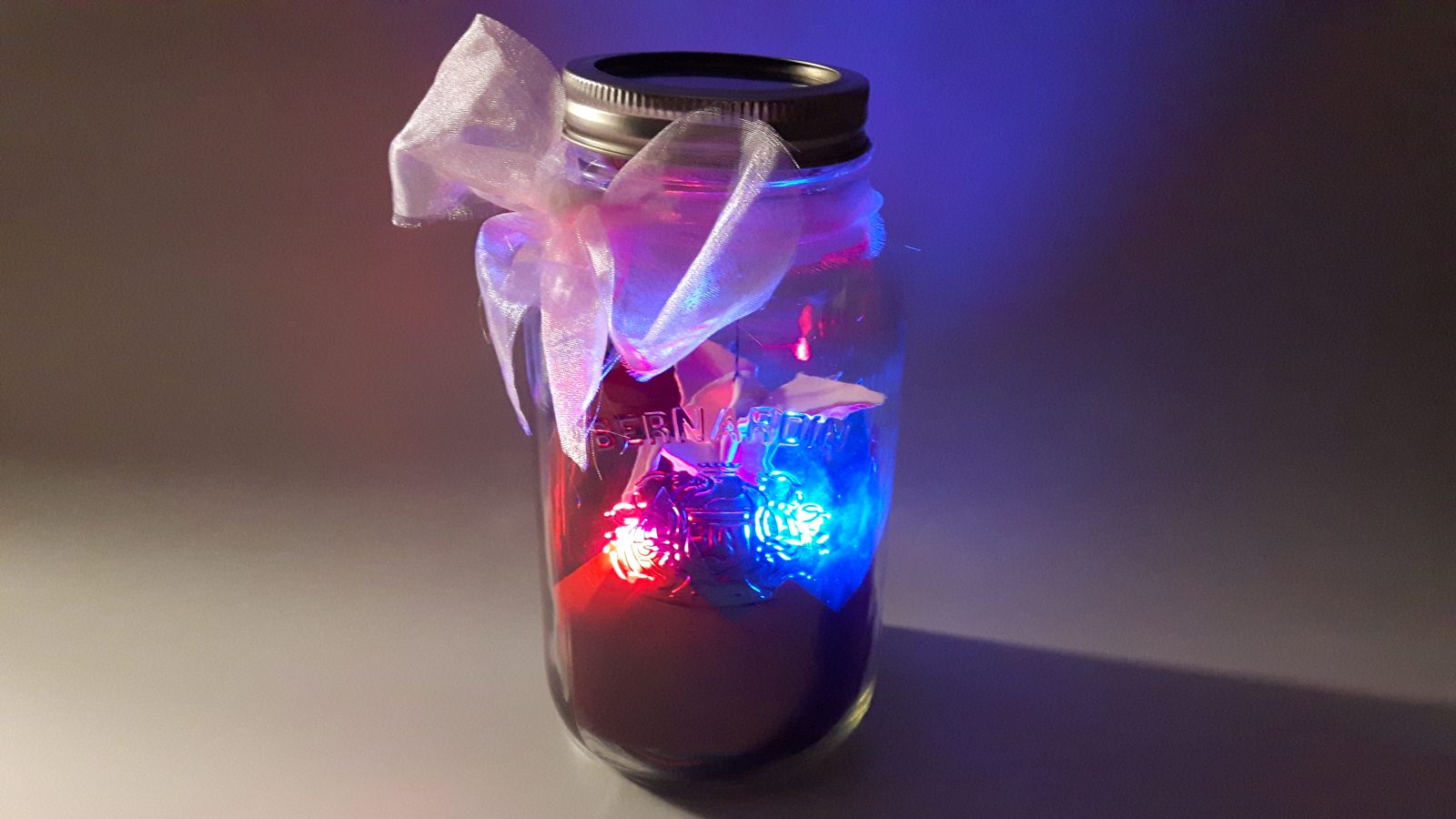
jar.
Arduino Code for LED Sequence
/*
RESOURCES USED:
Adafruit Arduino - Lesson 3. RGB LED: https://learn.adafruit.com/adafruit-arduino-lesson-3-rgb-leds/arduino-sketch
Arduino Fading LED Tutorial: https://www.arduino.cc/en/Tutorial/Fade
*/
int redPin = 11;
int greenPin = 10;
int bluePin = 9;
int redBrightness = 255; //initial red brightness of led #1
int blueBrightness = 0; //initial blue brightness of led #2
//int greenBrightness = 0;
int redFadeAmount = 3;
int blueFadeAmount = -3;
//int greenFadeAmount = 3;
void setup() {
//configure 3 PWM arduino pins as outputs for the LEDs connected in parallel
pinMode(redPin, OUTPUT);
pinMode(greenPin, OUTPUT);
pinMode(bluePin, OUTPUT);
}
void loop() {
// set the brightness of red pin:
analogWrite(redPin, redBrightness);
analogWrite(bluePin, blueBrightness);
// change the brightness for next time through the loop:
redBrightness = redBrightness - redFadeAmount;
blueBrightness = blueBrightness - blueFadeAmount;
// reverse the direction of the fading at the ends of the fade:
//since they are matched up, we only need to check red
if (redBrightness <= 0 || redBrightness >= 255) {
redFadeAmount = -redFadeAmount;
blueFadeAmount = -blueFadeAmount;
delay(3000); //pause when reaching 100% blue or 100% red
}
// wait for 30 milliseconds to see the dimming effect
delay(30);
}
